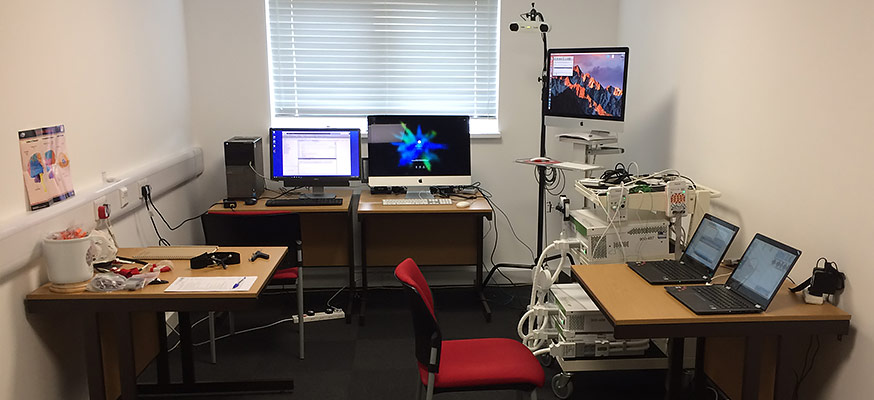Research in the laboratory focuses primarily on investigating the neural bases of speech communication. We are interested in studying how normal brains communicate, and also what goes wrong in the brains of people with speech and language impairments.
To study this, we focus on the entire auditory pathway, from the ear to the auditory cortex, and beyond. We look at how auditory areas of the brain interact with other, non-auditory areas of the brain, to help us understand the neurobiological network that subserves speech perception, and how the network adapts depending on the situational context. Some questions that we are currently researching include: How do sensory and motor brain areas interact during speech perception? How do descending auditory projections influence low-level speech perception? How can we use information about the ear and the brain to detect communication difficulties and help to restore them?



